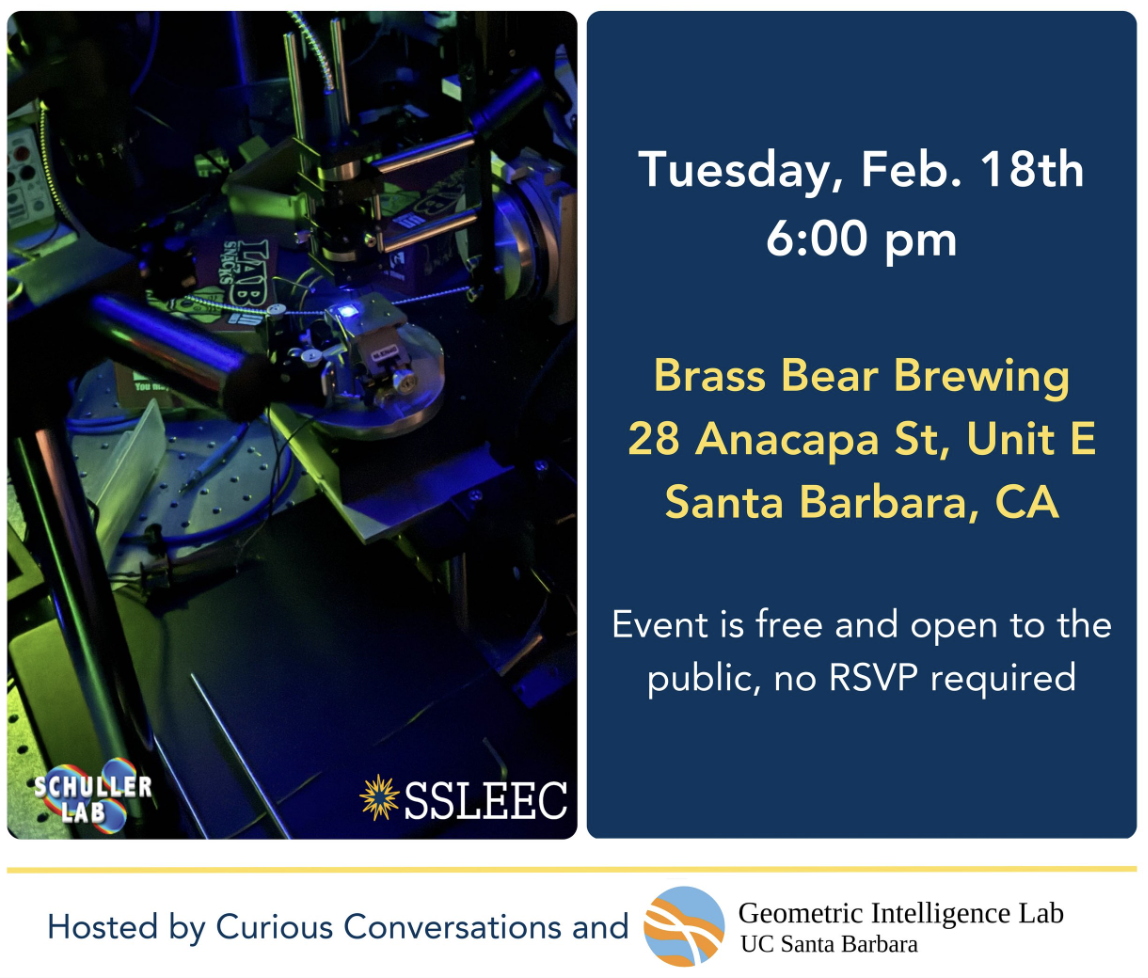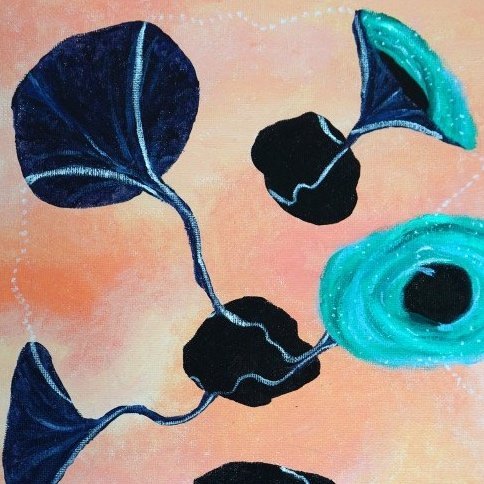
REAL CONVERSATIONS
TUESDAY NIGHTS, 7PM, Brass Bear Brewing
Can AI help create new forms of dance? How might AI accelerate the discovery of medicines? How do brains and machines learn from each other?
Real conversations bring us together to discuss how AI is transforming the discovery process across scientific fields, accelerating research, innovation, and breakthroughs. Each discussion is guided by a speaker passionate about their field —from AI for medicine to AI in the arts— while we share ideas, food, and drink. Events are free and open to everyone. Join us for a thought-provoking conversation, or volunteer to lead one yourself.
CONTACT US AT: hi@curicos.com / awwest@ucsb.edu
PAST EVENTS

by Gabriel Pizarro, UC Santa Barbara
held at Brass Bear Brewing
As software production scales at an unprecedented rate, so too does the challenge of keeping it secure. Automated bug-finding techniques like fuzzing have become indispensable in vulnerability research, yet their brute-force nature demands vast computational resources—driving up costs and environmental impact. While CPU gains have stagnated, GPUs, such as those used in AI, offer highly parallelizable compute at increasingly accessible prices. Join UC Santa Barbara undergraduate researcher Gabriel Pizarro in exploring how NVIDIA hardware can be leveraged to augment traditional fuzzing techniques.

by Roark Chao, UC Santa Barbara
held at Brass Beer Brewing
Ever wonder how light is somehow responsible for everything spanning the facial recognition in your phone to the world-wide internet we love to use? Come join UC Santa Barbara graduate student Roark Chao in controlling the very behavior of light through smaller-than-light structures—better known as metasurfaces! Roark will detail the mechanisms of light generation from within commonplace light-emitting diodes (LEDs) and how modern engineers can use metasurfaces to achieve astounding results like “laser-fying” your LEDs!

by Madeleine Bow Jun Leibovitch, UC Santa Barbara
held at Brass Beer Brewing
“Quantum” might be a buzzy science word these days, but physicists’ evolving understanding of quantum mechanics continues to critically shape theories that describe the laws of our universe. Broader science and society are then concerned with how this knowledge is useful. Join UC Santa Barbara graduate student Madeleine Bow Jun Leibovitch to explore how scientists probe these topics in a lab using things like lasers, magnets, mirrors, epoxy, and lots of tinfoil to make use of the coldest objects in the universe. Madeleine will share how she uses these tools for investigating fundamental questions in quantum science.

by Mathilde Papillon, UC Santa Barbara's Geometric Intelligence Lab
held at Kiva Cowork, Santa Barbara
What if an artificial intelligence (Al) could propose dance moves tailored just for you? Dance moves that work for your body and have just the speed and style you want? PhD candidate Mathilde Papillon from UC Santa Barbara's Geometric Intelligence Lab shares her work building PirouNet, the Al that uses dance theory to understand and create personalized dance choreography.

by Meg Schimmel, Department of Molecular, Cellular and Developmental Biology, Weimbs Lab
held at Kiva Cowork, Santa Barbara
UC Santa Barbara PhD candidate Meg Schimmel will share her research on developing a revolutionary approach to treat autosomal dominant polycystic kidney disease (ADPKD), the most common inherited renal disease.

by Elle Murata & Hannah Grotzinger, UCSB Women’s Brain Health Initiative, Jacobs Lab
held at Brass Bear Brewing, Santa Barbara
The impact of pregnancy and menopause on brain health is largely unknown. Given their relevance to over half of the world’s population, research on these topics is critical. Graduate students Hannah Grotzinger and Elle Murata as review the current state of neuroscience research on pregnancy and menopause. In their talk, they provide a background on the importance of studying women’s brain health and share preliminary data from their studies.

by Molly Kaplan, UCSB Physics
held at Brass Bear Brewing, Santa Barbara
Are you curious about what happens inside a black hole? Perhaps you're wondering whether wormholes really exist, or pondering where you fit into the cosmos? If so, join us for a lightspeed journey through the cutting-edge in the field of quantum gravity, the theory that unites quantum mechanics and general relativity and describes the fundamental physics behind everything in our universe. During our tour, we'll delve into a decades-old mystery about information disappearing inside a black hole, and explore the new story that demystifies this information paradox. We'll also examine one of the main tools theoretical physicists use to understand quantum gravity: the holographic principle. This remarkable theory has unlocked new insights into the true nature of spacetime. No advanced science background is required, just bring your excitement and curiosity!

by Adele Myers, UCSB Women’s Brain Health Initiative
held at Brass Bear Brewing, Santa Barbara
50% of the world's population experiences menstrual cycles, pregnancy, and menopause. 85% of females aged 18-64 have used contraceptives. Yet, only a small fraction of research has been dedicated to understanding how these processes impact the female brain.
This lack of attention to female health is surprising, especially considering the increased risk of neurological conditions such as Alzheimer's, migraines, and multiple sclerosis in women.
Join Adele Myers as she delves into the understudied field of female reproductive health and its effects on the brain. In this talk, she will show how cutting-edge AI can help understand shape changes in the female brain during hormonal fluctuations associated with the menstrual cycle.
In Partnership with UCSB Geometric Intelligence Lab and the Jacobs Lab

by Michael Fischer
held at the Red Victorian, San Francisco
In the future, AI will change how software is created. Such AI systems would allow end-users to create customized software for their specific tasks. Michael will describe his research on using AI to build software and graphical user interfaces. First, he will describe a system that converts natural language commands into runna